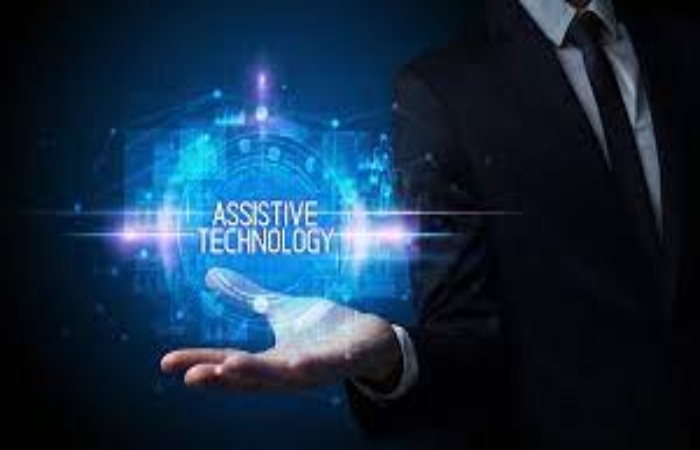Table of Contents
Introduction
Assistive technology enables people to lead healthy, productive, independent, and distinguished lives and to participate in teaching, the labor market, and civic life. Assistive technology decreases the need for formal health and support services, long-term care, and the work of caregivers. Without assistive technology, people are often left out, isolated, and trapped in poverty, increasing the impact of illness and disability on a person, their family and society.
What is Assistive Technology?

These days technology is everywhere. But did you know that exact technology tools can help people who think and learn differently?
What is assistive technology? How can children and adults benefit from these tools, and where to start? Read on to find out more.
Technology enables people to lead healthy, productive, independent, and distinguished lives and to participate in teaching, the labor market, and civic life. Assistive technology decreases the need for formal health and support services, long-term care, and the work of caregivers. Without assistive technology, people are often left out, isolated, and trapped in poverty, increasing the impact of illness and disability on a person, their family and society.
The Basics of Assistive Technology
Assistive technology is any device, software, or gear that helps people overcome challenges to learn, communicate, and function better. A wheelchair is an example. So is software that reads text aloud on a computer. Or a keyboard for someone who has difficulty with handwriting.
These tools can help people overcome their challenges while taking advantage of their strengths. It is especially significant for children who have learning difficulties, whether in reading, writing, math, or other areas. It can help them progress in school and life, strengthening their confidence and independence.
There are many myths about assistive technology. Some mistakenly believe that using it is “cheating.” Others fear that children who use it may become too dependent on it.
One of the biggest mythologies is that using assistive technology will prevent children from learning academic skills. That’s not true. For example, experts agree that listening to audiobooks does not prevent children from learning to read.
While it has many benefits, keep in mind that it cannot “cure” things like dyslexia or ADHD. Nor can it replace good teaching.
Examples of Assistive Technology Tools
Despite the word “technology,” not all tools are high-tech. It includes many versatile and straightforward tools, such as bookmarks and organizers. An excellent example of basic technology is a pencil holder.
However, many tools are high-tech, and due to technological advancements, the tools are now available on a variety of platforms :
- Laptops and desktops.
- Mobile devices (includes smartphones and tablets).
- “Chromebooks” (and the Chrome browser used on any device).
How to find the Correct Assistive Technology Tool?
With so many assistive technology tools available, finding the right one can be overwhelming. A good approach is to choose assistive technology that addresses a specific difficulty. For example, if a child struggles with writing, try dictation technology. As the child speaks, the words appear on the screen.
People who have access to a mobile device, such as a smartphone or digital tablet, can add assistive technology tool apps. You will find apps for children of different ages through the technology search engine, which experts have approved. Also, check out these ideas:
- Apps to help young children in reading.
- Apps to help teenagers with the organization.
- Meditation apps for children.
- Apps to help you take notes.
- Apps to help young children develop self-control.
- Websites, apps, and games to learn to type.
- Apps to help tweens and teens build self-control.
- Apps for the challenges of back to school.
People who have access to a laptop or desktop can use it’s software for reading, writing, and math. Those with access to a Chromebook or Chrome browser can check out Chrome tools that help with various challenges.
If you don’t know where to start, text-to-speech is an excellent first step. Text-to-speech converts electronic text into spoken words so that people can listen to digital textbooks. It can make a big difference for people who have trouble reading or paying attention.
Assistive Technology within Universal Health Coverage
The 2030 Agenda for Sustainable Development places good health and well-being at the center of a new development vision and emphasizes. Universal health coverage ensures sustainable development for all, so that anyone, anywhere, can access the health services you need without having to face financial difficulties.
To achieve the Sustainable Development Goals, provide universal health coverage, and implement the United Nations Convention on the Rights of Persons with Disabilities, ratified by 177 countries, neglected needs for assistance products must be addressed.
“Leaving no one behind” means ensuring that people with disabilities, the older population, and those affected by chronic diseases are included in society and allowed to live healthy and dignified lives.
Also Read: Consumer Technology – Definition, Types, Computers, and More
